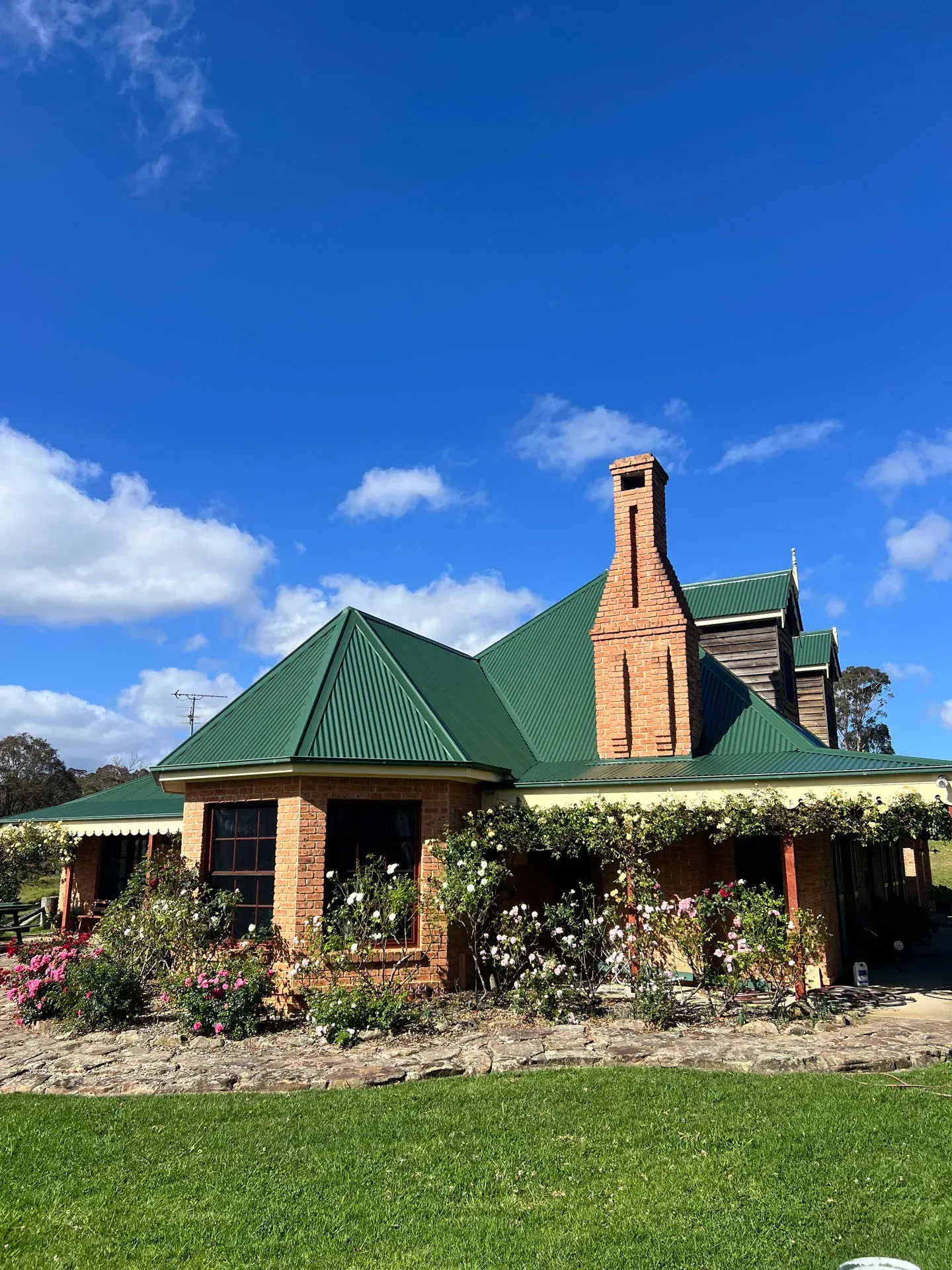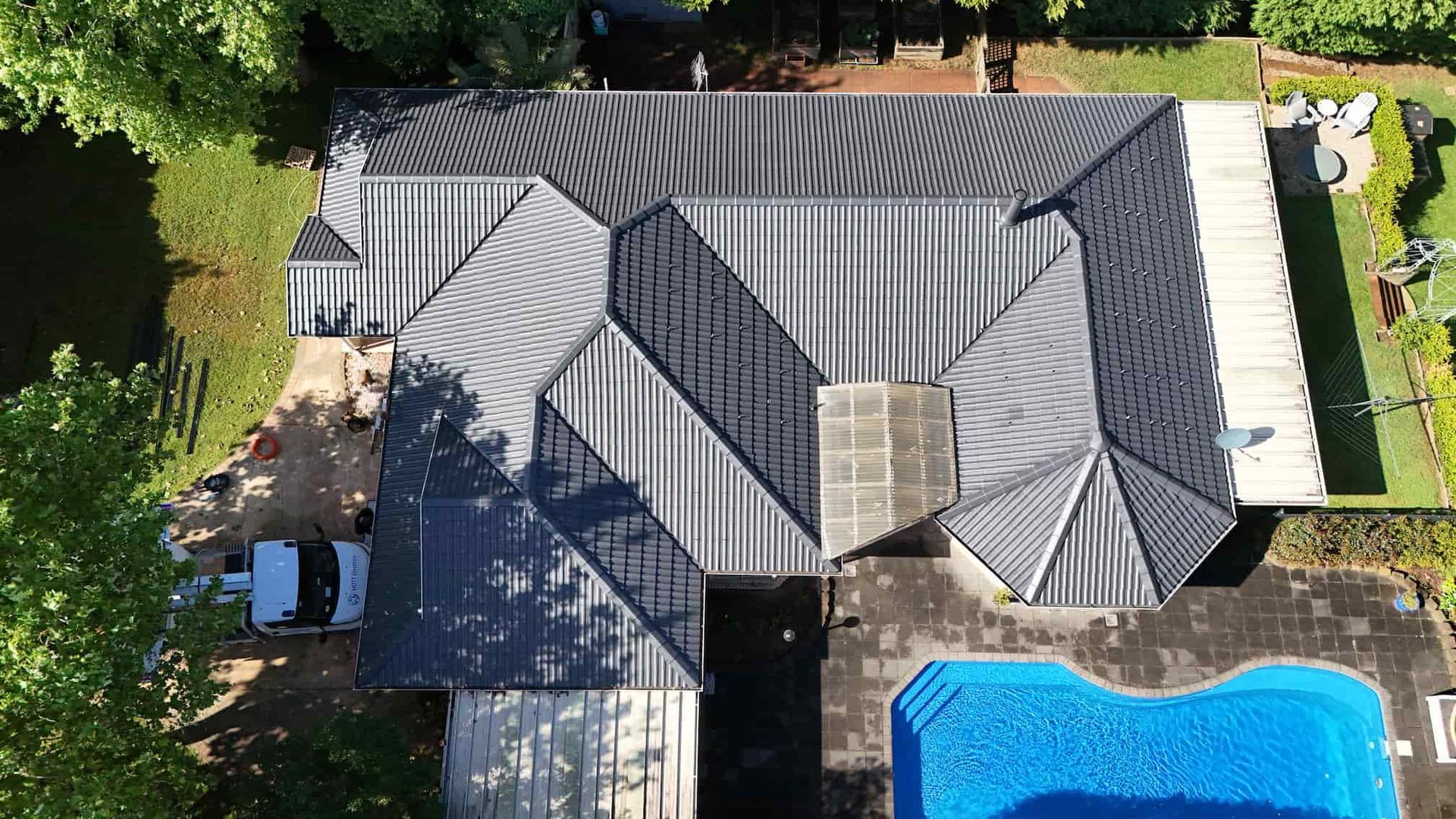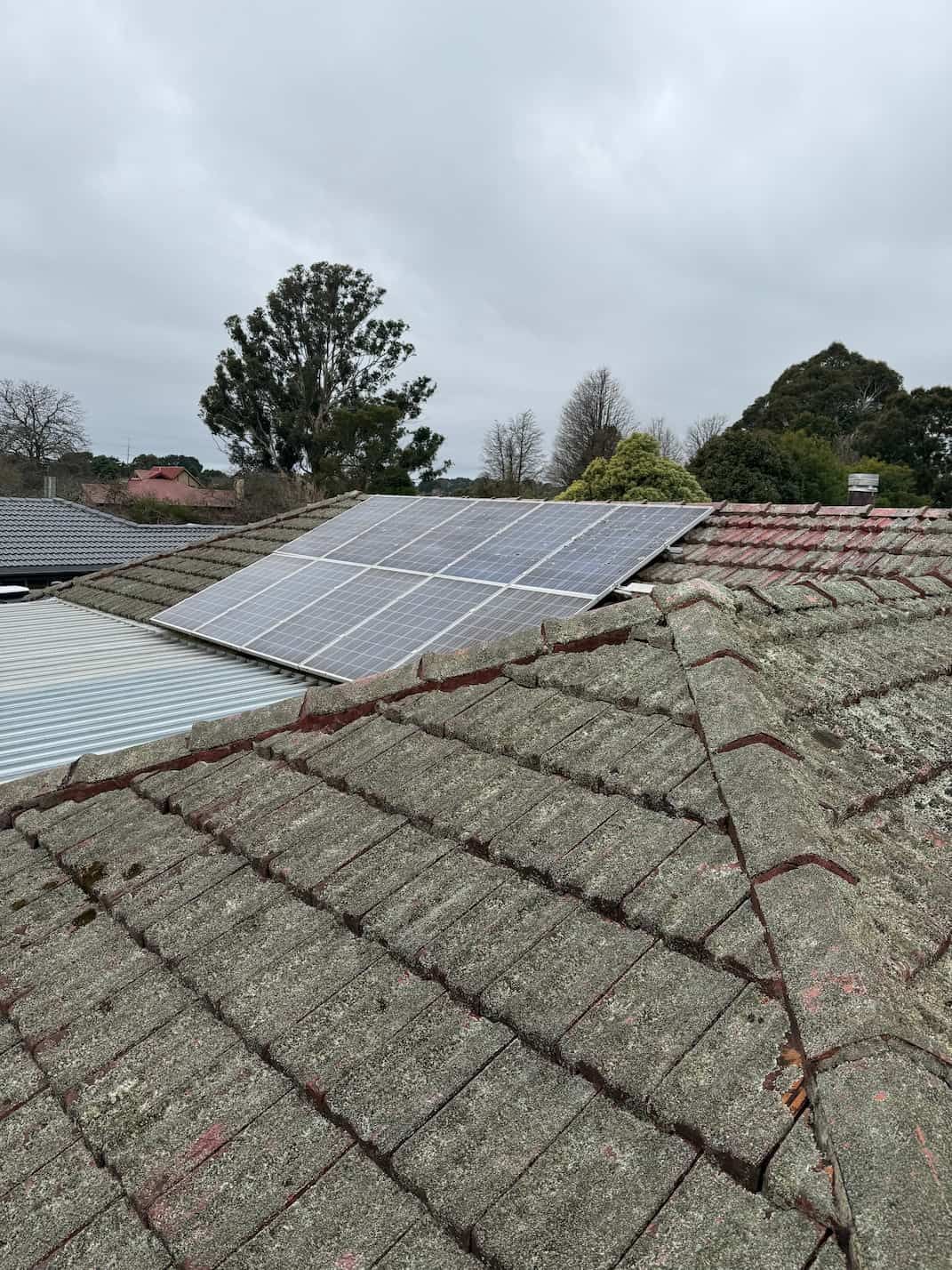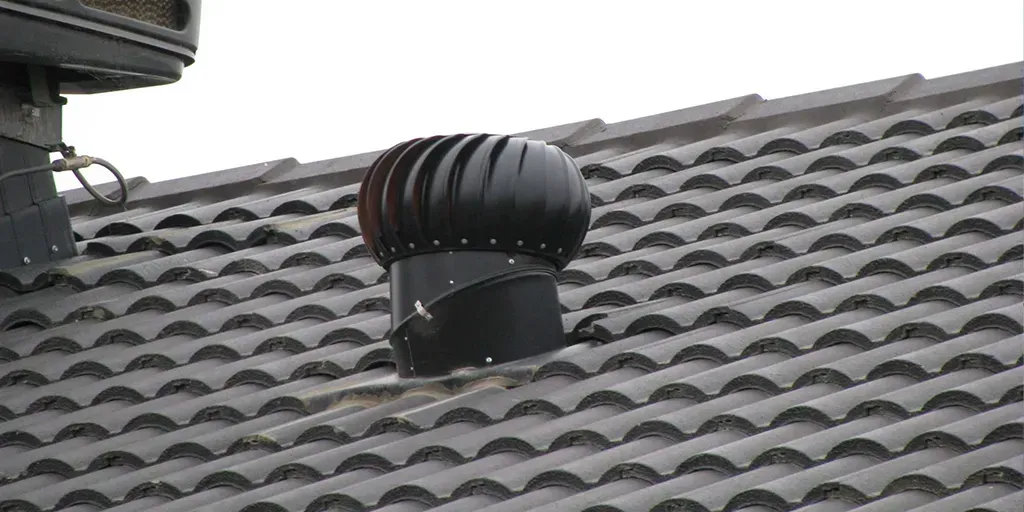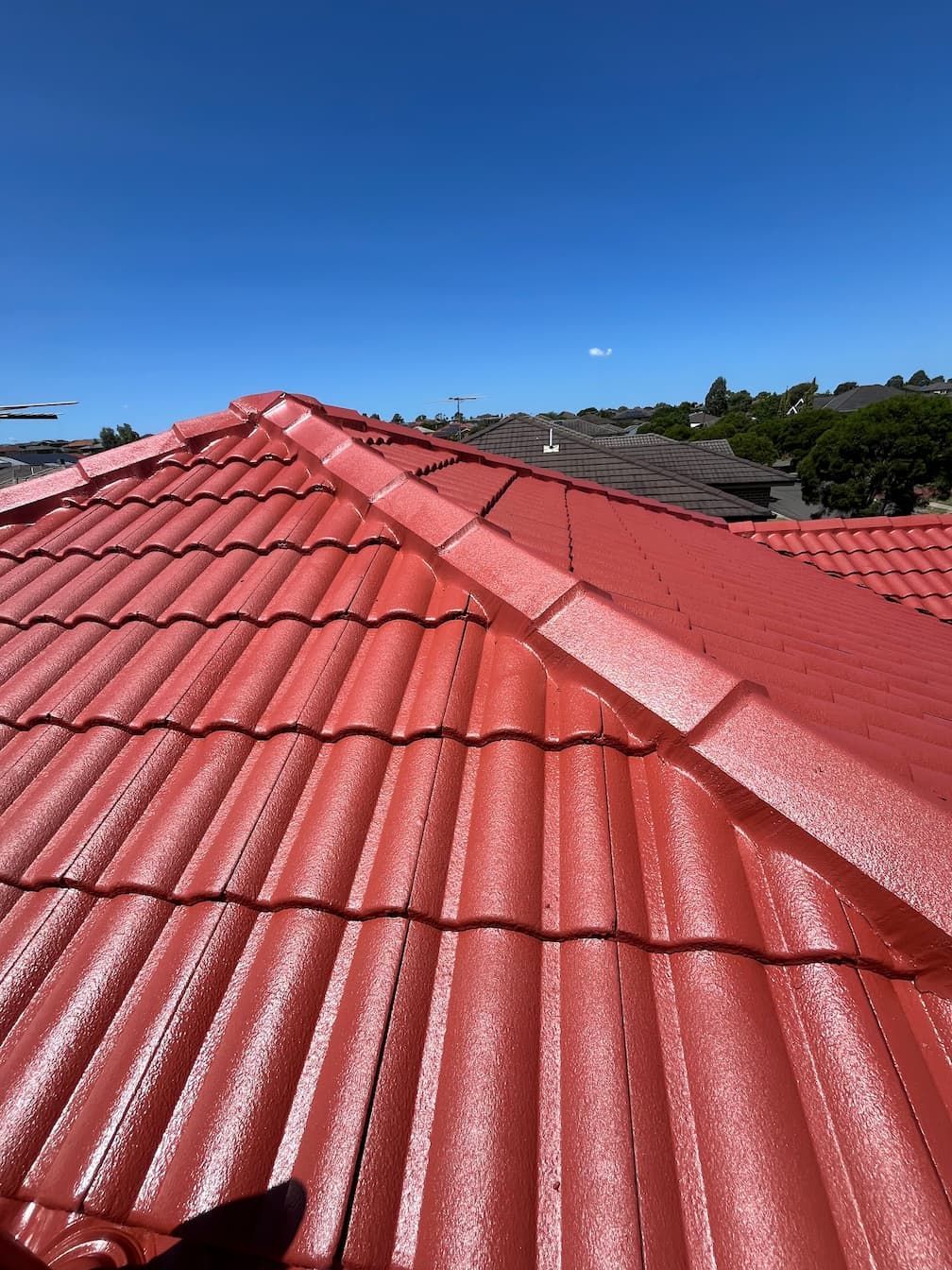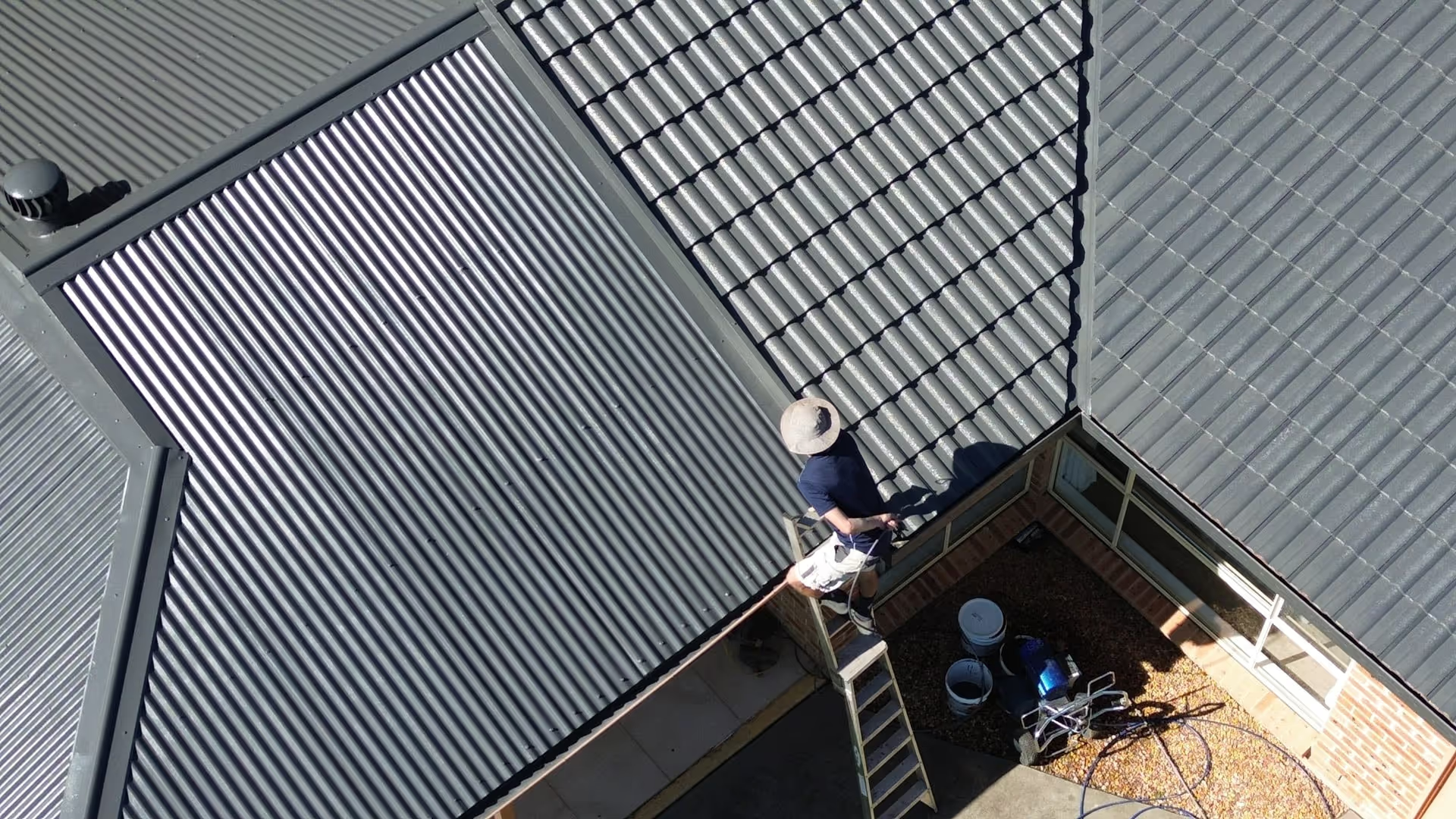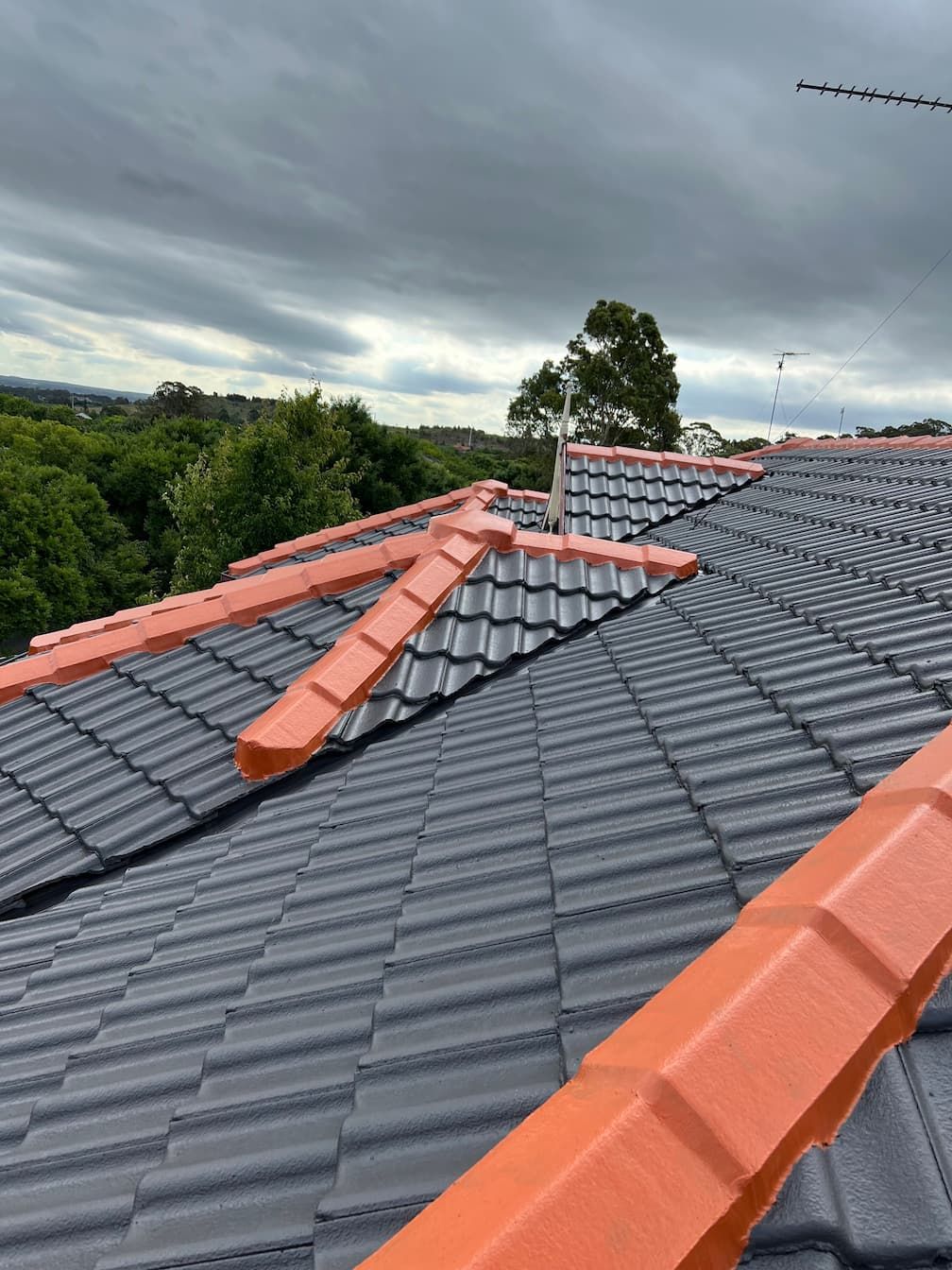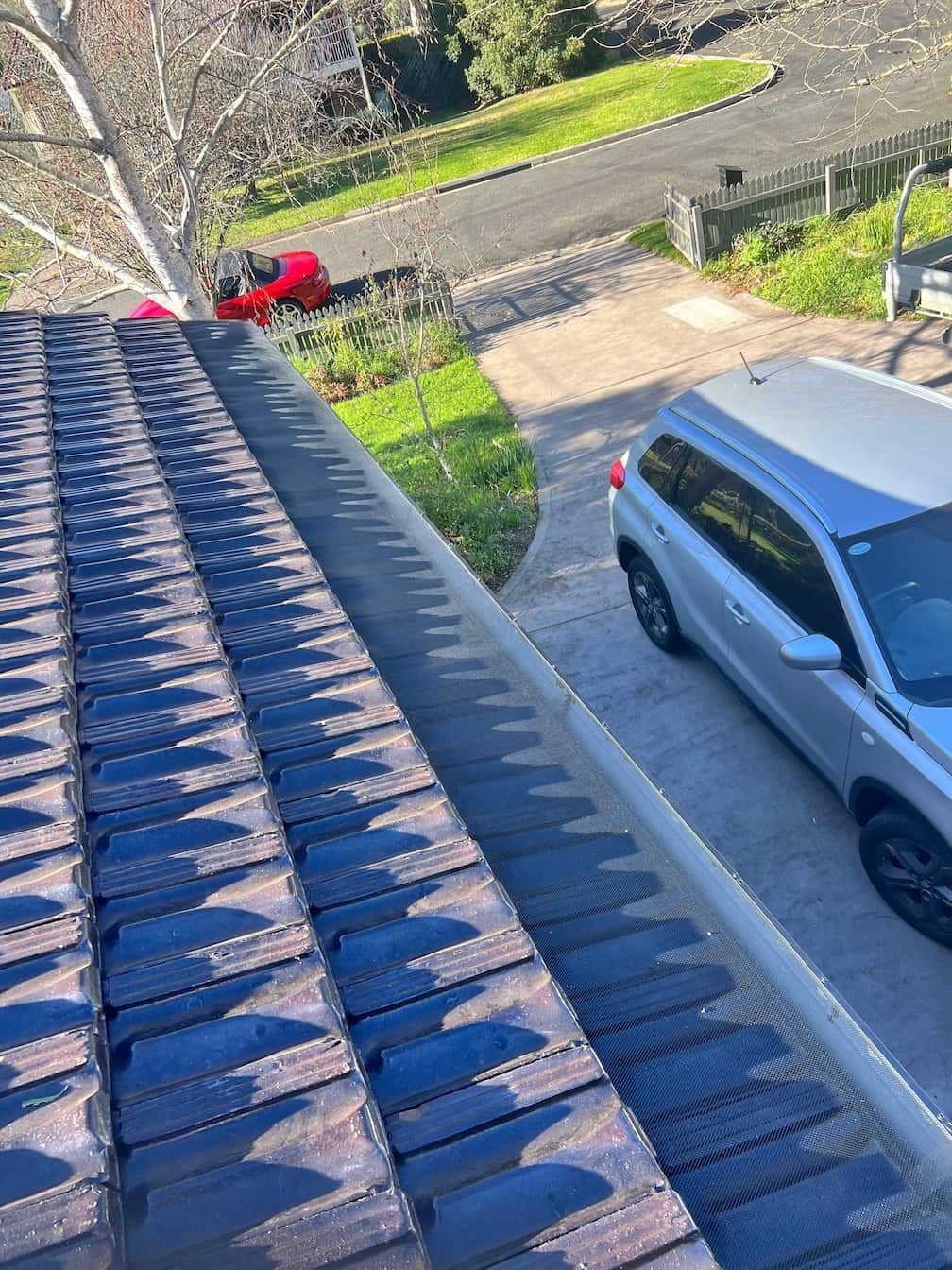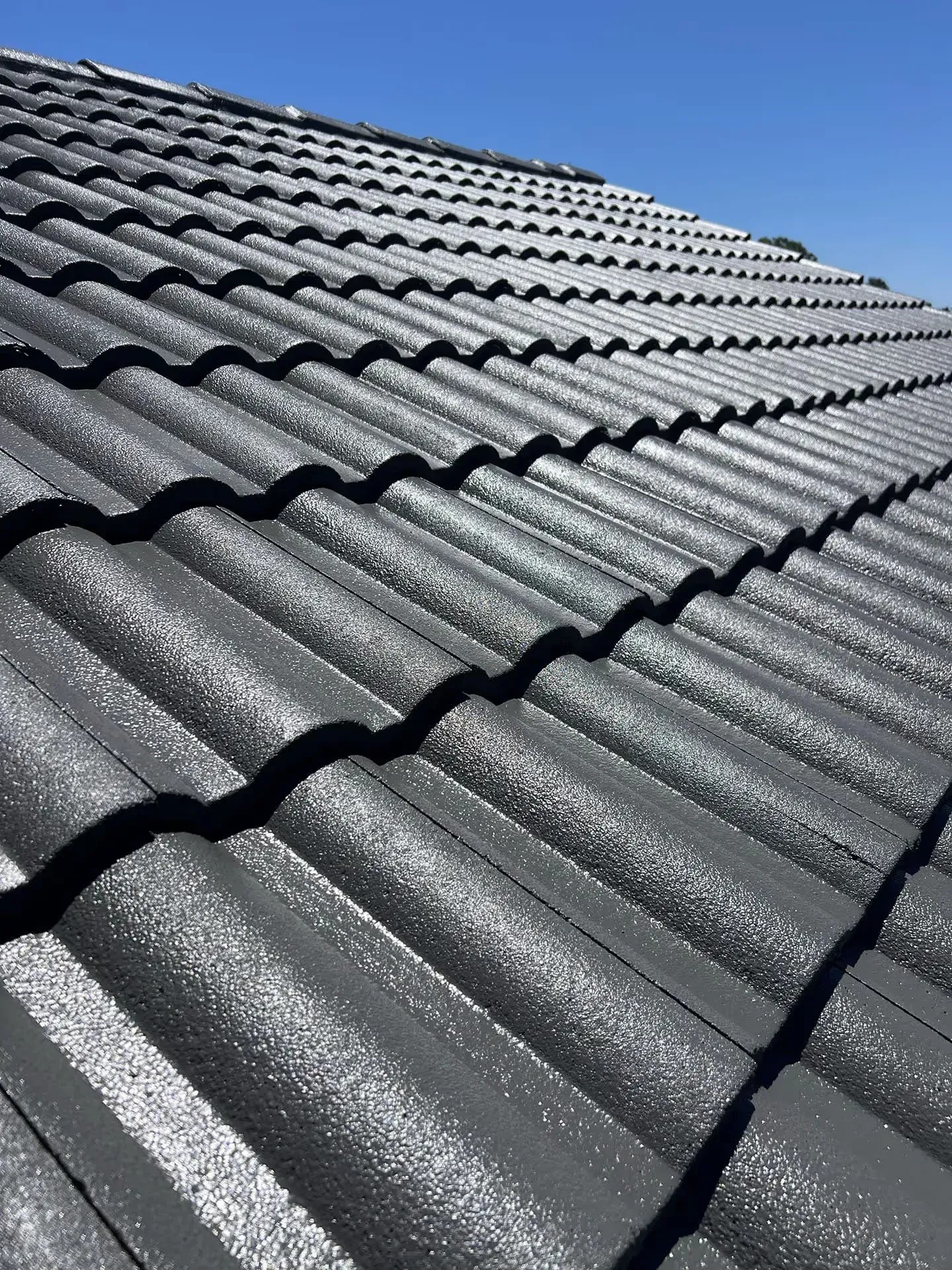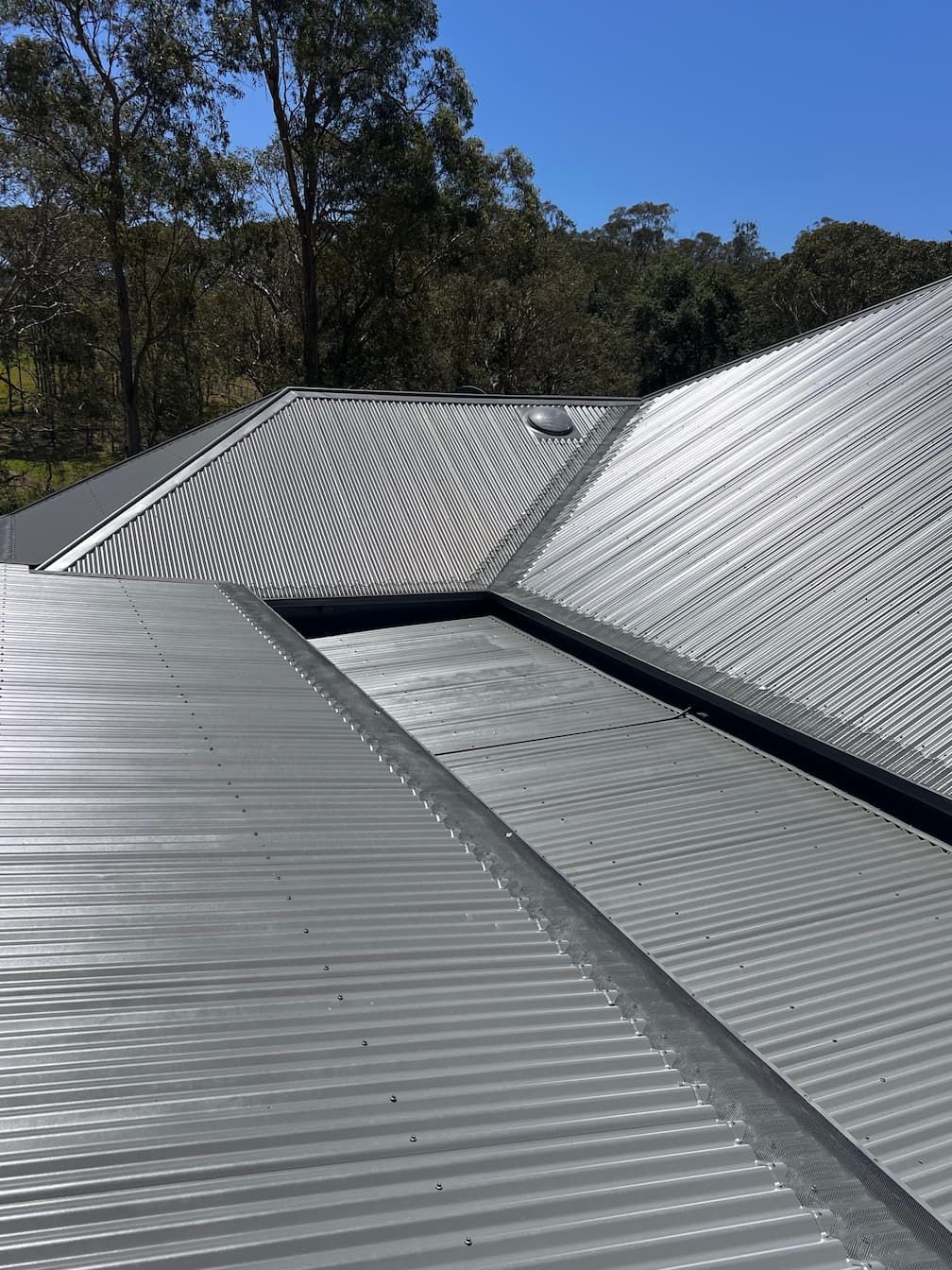Colorbond Roof vs Tile Roof: What's Best For Your Home
When it comes to installing or replacing a roof, homeowners often face one of the biggest decisions in the building process: Colorbond roofing or roof tiles. Each option offers distinct advantages, visual appeal, and price points.
Your choice will affect not only the appearance of your home but also its durability, maintenance requirements, and even long-term property value.
This comprehensive guide explores the differences between Colorbond and tiled roofs, helping you make an informed choice that suits your home and lifestyle.
Colorbond Roof vs Tile Roof – Which is Best?
There is no one-size-fits-all answer to this question. Both roofing options can perform exceptionally well in Australian conditions, but their suitability depends on factors such as climate, budget, and personal style preferences.
- Choose Colorbond if you want: a modern aesthetic, faster installation, low maintenance, and exceptional weather resistance.
- Choose tiles if you want: a classic, traditional look, excellent natural insulation, and a material that has stood the test of time.
Your local climate can also play a role. In coastal areas, Colorbond’s corrosion resistance gives it an edge, while in cooler or quieter suburbs, roof tiles may appeal due to their sound-dampening and thermal properties.
What is Colorbond Roofing?
Colorbond is a steel roofing material created specifically for Australian homes. Manufactured by BlueScope Steel, it is engineered to withstand Australia’s harsh weather conditions — from scorching summers to intense storms.
Its composition includes:
- A strong steel core for structural strength
- Corrosion-resistant metallic coating
- Pre-treatment and primer layers for added protection
- A baked-on colour finish designed to resist chipping and fading
Colorbond roofing is commonly seen on modern homes but is also used in heritage renovations and commercial buildings because of its adaptability.
What Colours and Styles Are Available for Colorbond Roofing?
Colorbond is known for its extensive colour palette, inspired by the Australian landscape. Popular choices include:
- Classic shades: Monument®, Surfmist®, Woodland Grey®
- Earth tones: Evening Haze®, Paperbark®, Jasper®
- Modern tones: Basalt®, Shale Grey®, Ironstone®
- Coastal colours: Deep Ocean®, Windspray®, Dover White®
In addition to colours, Colorbond comes in a range of profiles, such as:
- Corrugated: Ideal for traditional and rural homes
- Standing seam or flat profiles: Sleek, modern look for contemporary builds
- Trimdek or custom orb: Common in commercial and industrial designs
You can also choose from different finishes, such as matt for a subtle appearance or gloss for a striking, polished effect.
What Are the Benefits of a Colorbond Roof?
Colorbond roofing offers a wide range of advantages that make it one of Australia’s most sought-after roofing materials:
- Lightweight yet durable: Colorbond is easier to transport and install than tiles while still offering impressive strength.
- Low maintenance: Requires minimal upkeep compared to tiled roofs, which may need resealing or replacing.
- Fire-resistant: Non-combustible steel makes it ideal for bushfire-prone areas.
- Weather protection: Its baked-on coating resists chipping, peeling, and corrosion even in harsh coastal regions.
- Quick installation: Large sheets cover more area, reducing installation time and labour costs.
- Energy efficiency: Lighter shades reflect heat, helping keep your home cooler during summer.
- Eco-friendly: 100% recyclable and often manufactured from recycled steel.
What Are the Disadvantages of a Colorbond Roof?
While Colorbond roofing is impressive, it’s important to consider the downsides:
- Noise factor: Heavy rain or hail can be louder on a metal roof unless proper insulation is installed.
- Potential denting: Large hail or falling branches may leave dents, although newer steel technology has improved resistance.
- Upfront cost: Quality Colorbond can be more expensive initially than standard concrete tiles.
- Heat retention (dark colours): Darker Colorbond colours can retain heat, although insulation or lighter colours can reduce this.
Maintenance Requirements for Colorbond Roofing
Colorbond roofing is relatively low-maintenance, which is one of its biggest selling points.
Basic maintenance tasks include:
- Regular cleaning:
Clear gutters and remove leaves or debris to prevent water build-up.
- Surface inspections: Check for scratches or chips that could expose steel to rust.
- Occasional repainting: While Colorbond holds its finish for decades,
repainting may be needed after 20–30 years in extreme climates.
- Fastener checks: Ensure screws and flashings remain secure to prevent
leaks.
Colorbond Roof Installation Process
Installing Colorbond roofing is typically quicker than tile installation. Sheets are measured, cut, and fixed into place with specialised fasteners. Flashings and ridge caps are added for waterproofing. Because the material is lighter, it puts less strain on the roof frame, often lowering structural costs.
What Are Roof Tiles?
Roof tiles, on the other hand, are one of the oldest roofing materials in the world. Whether made from concrete or terracotta, tiles have an undeniable traditional appeal.
They’re heavy, which can provide stability against strong winds, but this also means they require a more robust roof frame.
Tile roofs are particularly popular in suburban areas where timeless designs remain in demand. Their durability can last several decades with proper care, and many homeowners appreciate the natural soundproofing they provide.
Roof tiles are made from either
concrete or terracotta, both of which provide excellent durability.
- Concrete tiles: Cost-effective and versatile but may require resealing over time.
- Terracotta tiles: Naturally fade-resistant, premium-looking, and long-lasting.
Tiles are heavier than Colorbond, which means they are not suitable for every roof structure. However, their weight provides additional soundproofing and can help regulate internal temperatures.
What Colours and Styles Can a Tile Roof Be?
Roof tiles are available in a wide range of colours and profiles.
- Concrete tiles: Can be painted in many shades, giving you flexibility for future design changes.
- Terracotta tiles: Offer rich, earthy tones that don’t require painting, retaining their natural finish for decades.
Profiles include flat, curved, or interlocking styles to suit homes ranging from heritage to ultra-modern.
What Are the Disadvantages of Choosing a Tile Roof?
Despite their traditional appeal, tiles come with a few drawbacks:
- Weight: May require reinforced roof framing.
- Slower installation: Laying tiles is labour-intensive compared to Colorbond sheets.
- Fragility: Tiles can crack when walked on or under heavy impact.
- Maintenance: May need resealing or re-bedding over time.
- Limited slope use: Not suitable for very low-pitched roofs, unlike Colorbond.
Colorbond vs Tile Roofing: Pros and Cons
| Feature | Colorbond Roofing (Pros) | Colorbond Roofing (Cons) | Tile Roofing (Pros) | Tile Roofing (Cons) |
|---|---|---|---|---|
| Durability | Resistant to rust, cracking, and peeling | May dent under heavy impact (hail, falling branches) | Long-lasting, especially terracotta | Tiles can crack if walked on |
| Aesthetic Appeal | Wide range of modern colours and profiles | Metallic look may not suit all traditional homes | Classic, timeless appearance | Limited modern profile options |
| Installation | Lightweight and faster to install | Requires skilled trades for proper fitting | Stable in high winds due to weight | Slower, labour-intensive installation |
| Maintenance | Low maintenance; minimal repainting or resealing | Occasional inspections for scratches | Individual tiles can be replaced if damaged | May require resealing and re-bedding over time |
| Weather Resistance | Excellent in coastal and bushfire-prone areas | Can be noisy in heavy rain if not insulated | Naturally insulates against sound and temperature | Prone to water absorption if not sealed properly |
| Cost | Faster installation reduces labour costs | Higher upfront material cost than basic tiles | Concrete tiles are often cheaper initially | Ongoing maintenance costs can add up |
| Energy Efficiency | Light colours reflect heat, reducing cooling costs | Dark colours may retain more heat | Tiles offer natural thermal mass | Heat retention in summer |
| Lifespan | 50+ years with minimal maintenance | Paint may fade in extreme climates | 50+ years for terracotta, with proper upkeep | Concrete tiles may fade faster |
FAQs About Colorbond vs Tile Roofing
How long does each type of roof last?
Colorbond roofs can last 50+ years with proper care, while tiled roofs, especially terracotta, can also exceed 50 years but often require more maintenance.
Is Colorbond hotter than tile?
Not necessarily. Lighter Colorbond colours reflect sunlight effectively, while tiles provide natural thermal insulation. With the right insulation, both materials can perform well in warm climates.
Which roof adds more value to my home?
Both can add value if installed correctly. Colorbond often appeals to buyers seeking a low-maintenance, modern home, while tiles suit buyers who prefer classic designs.
Can I switch from tiles to Colorbond?
Yes, but it may require structural adjustments since Colorbond is lighter. A qualified roofer can assess your roof frame before installation.
Is either option better for coastal areas?
Colorbond’s corrosion-resistant coating makes it ideal for coastal properties where salt spray can damage other materials.
Conclusion
The choice between Colorbond and tiled roofing depends on your personal preferences, budget, and the specific conditions of your home.
- If you want a modern, low-maintenance roof that installs quickly, Colorbond is a strong choice.
- If you love a traditional look and don’t mind additional upkeep, roof tiles could be perfect.
No matter which you choose, investing in a high-quality roof will provide long-term protection and enhance your home’s value. To explore your options when it comes to the roof over your head, get in touch with Rapid Roof Services.
Written by Ryan Wilson
With over 15 years of roofing experience, Ryan is committed to delivering high-quality results for every client. As the owner and director of Rapid Roof Services, he takes pride in honest advice, unbeatable workmanship and ensuring every roof is restored to the highest standard.



